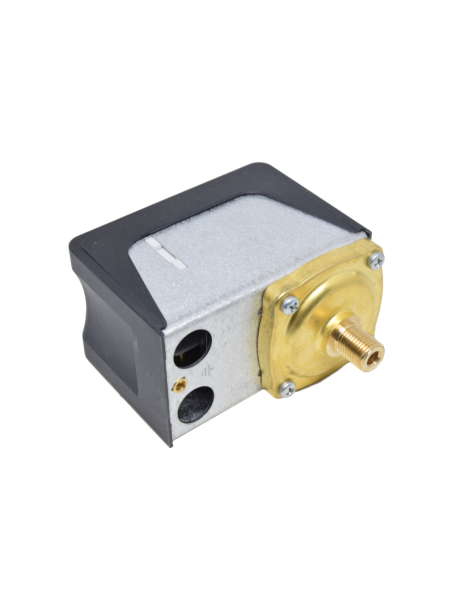






€68.99 tax excl.
 GDPR Compliance
GDPR Compliance
Protecting your personal data
 Shipping policy
Shipping policy
Everything about shipping your order
 Return policy
Return policy
all the inns and outs about our return policy
Probably the most used pressure switch used on the Asco P302/6 a 3 phase pressure switch. This pressure switch has been used espresso machines like: La Marzocco, Faema, Cimbali, Astoria, Wega, Nuova Simonelli, La Spaziale, San Remo and so on.The brand Asco used to be the company Sirai, since a while this name has changed but the product remains the same.
This pressure switch is a 3 pole 30A pressure switch. The pressure can be adjusted between 0.5 and 1,4bar. The maximal fluid temperature is 140 °C. the maximum contact load is with 220V 7kw (30A)
The connection for the pressure is a ¼” BSP-G with a pipe 4x6 mm
The principle of a spring actuated pressure switch is that when the boiler pressure raises, a membrane goes up and when it reaches the set pressure the contacts will disconnect. This results that there goes no power to the heating element anymore. When the pressure in the boiler lowers the contacts will connect again and the heating procedure starts over again.
For more information about the working of pressure switches, go to our blog page and you will find a article about pressure switches.
Data sheet
Well that answer is pretty simple, no it isn’t. The original valve works as following, when you turn the shaft inwards the valve pin will push a gasket holder. The steam can go out, close it again and no steam can go out. In the case of the modern E61 valves is that behind the gasket holder is a small stainless steel ball with a spring.
From the beginning of the Faema E61 brewing group are basically no differences between the parts installed inside the brewing group. Parts such as the valve gaskets, springs, valve assemblies and portafilters have all remained the same. The biggest change is the small cleaning hole on the front of the brewing group. With the earliest models this hole didn´t exist.
There are 5 types of boiler used on the Faema E61 espresso machine. The most well known is the double flanged model. You have on one side the heating element flange and on the other side the water level flange, both are out of production. These are held in place with aluminium boiler rings. For the single groups you have a boiler with a flange on one side.
The next model is a stainless steel boiler, with one flange. This type of boiler is less common then the copper boiler above. There is also a later model stainless steel, which doesn’t have a removable flange. Both these boilers have corrosion issues, this has to do because of the stainless steel.
The latest model is also a copper boiler, this boiler has a single heat exchanger(HX) in the middle. Most modern espresso machines have for each individual brewing group a individual HX.
Yes it is, but this depends on various factors. The first thing is experience, seen this is a manual operated espresso machine it requires a lot more attention from the barista then a solenoid operated model. There you need to stop the brewing process manually. If you don’t have the experience you probably can’t hold up with the tempo which is required at such a bar. Then I would advice to go for the Faema E61 Jubilee, this is the solenoid operated version of the Faema E61 Legend espresso machine.